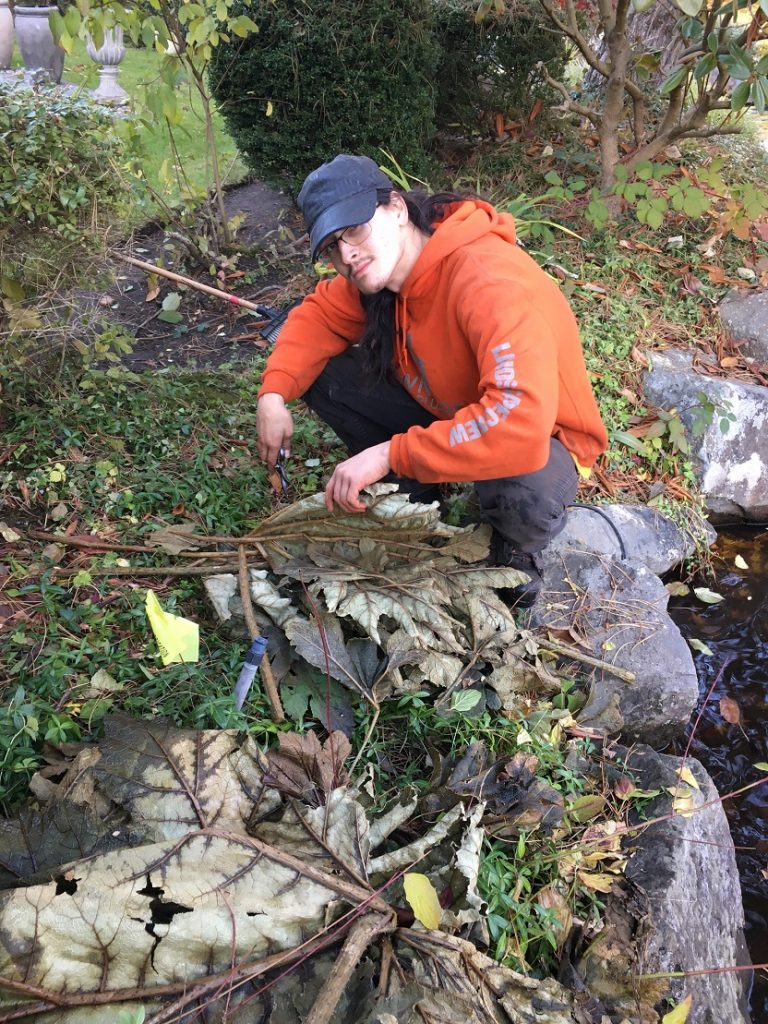Apprentices
Good landscapers are in great demand at the moment. Some of my previous blog posts showed how easy it was for new immigrants to become landscapers. But what about aboriginal youth?
To answer this question, we’ll consider the case of young Nate (his real name: used with permission). Nate is a great young dude with a partner and a new baby to support. He came to us from a Manitoba reserve where there were few opportunities and the weather sucked. So, Nate packed up and hit the West Coast for British Columbia- the best place on Earth! (If you ignore the current brutal housing situation.)
Right spirit
Nate possesses the right kind of spirit: a mix of initiative, playfulness, willingness to learn and can-do attitude. We found that out when Nate joined us for a company weekend getaway at the Wildlings Resort.
Once he got settled into his cabin, Nate launched his rental boat onto the lake, stocked annually with trout, and emerged hours later with a huge catch. All of his work mates observed the two fish limit, and they were stunned. But not Nate. This was his native land and there were no limits. His wide poacher’s grin proved it.
Luckily for Nate, his work mates were all too overcome by alcohol and legal marijuana to report him to the nearest conservation office. By the time they agreed on the correct “poacher” spelling, Nate had the fish gutted and iced with frightening efficiency. He also followed the old native custom of sharing by giving some fish away to his cabin mates.
Training
Now, when your apprentice has the right attitude, it’s easy to train him. Or her. That’s where Red Seal Vas comes in. Journeymen are supposed share their knowledge with apprentices in the field; and enjoy the process. The company gets a better trained, confident employee; and the apprentice gets valuable skills. With the right skills, young Nate can never be unemployed. The new skills are his to keep; better pay and advancement follow.
Now, let’s see how this works in the field with actual examples. Nate had the pleasure of my company for just a few hours, and this is what we covered.
Styrax pruning
We found some crossing branches inside a Japanese snowbell tree (Styrax japonicus), so I got Nate to remove them. When he pulled out a rusted hand saw he found on site earlier, buried in debris, I had to remind him to always use sharp hand saws. If your hand saw blade is rusty, get a new one and replace it. Making sharp cuts is mandatory.
We also reviewed the tree’s botanical name, Styrax japonicus. The specific epithet refers to Japan. Plant identification skills are very important for landscapers.
Lavender
Mid-November is a good time to deadhead spent lavender flowers. Use good hand snips, carefully grab a handful of flower spikes, and snip them off. The trick is to watch your fingers, so you don’t cut yourself. Don’t rush but don’t waste time snipping single flowers. Grab a handful.
Gunnera
Gunnera is an herbaceous flowering plant with large leaves. We found a cluster of them by a water feature. Since it was mid-November, the large leaves were flat on the ground and fading fast. When you moved the leaves, you could see the plant bases where growth occurs.
So, I showed Nate how the big leaves get flush cut at the base but not discarded with other green waste. Instead, we stack the large leaves on top of the plant bases, to keep them cozy in winter.

Conclusion
By now the answer to my question above should be clear. Aboriginal youth can definitely be developed into landscape professionals with the right kind of training and support from employers; and journeymen willing to teach people. I’m confident that young Nate will do well in 2023.




